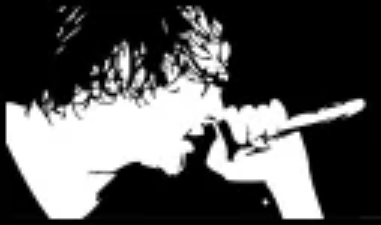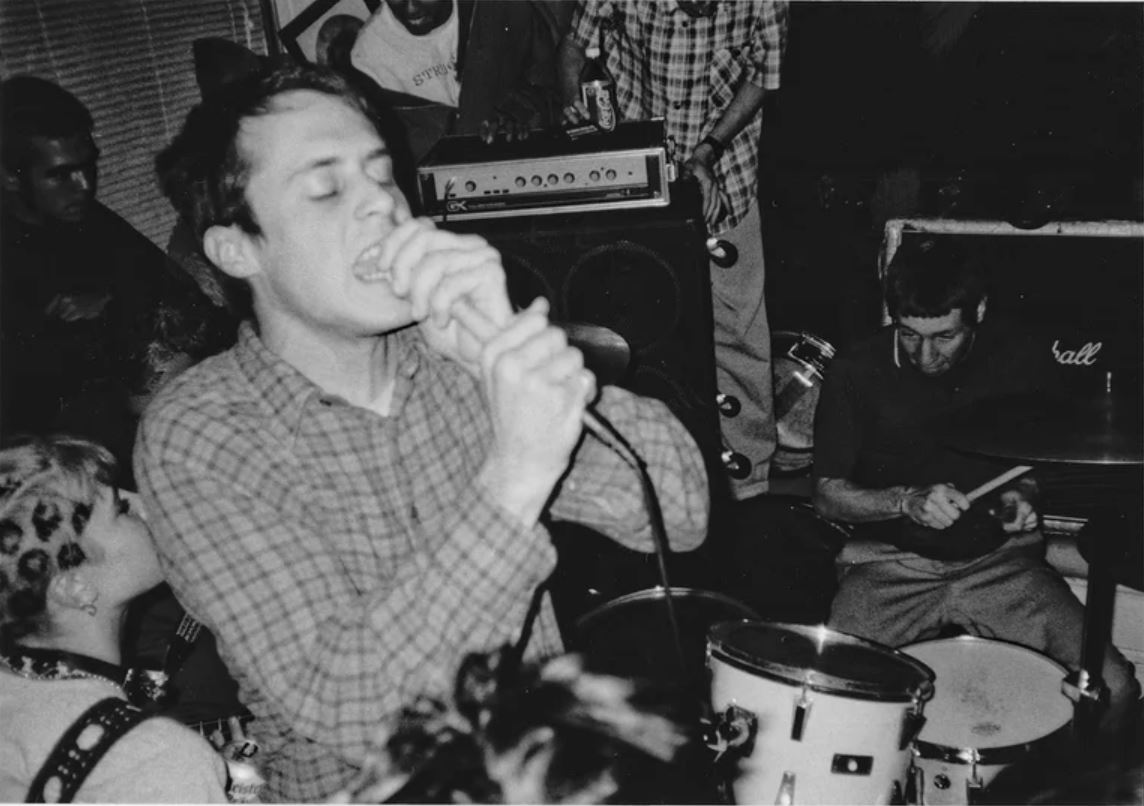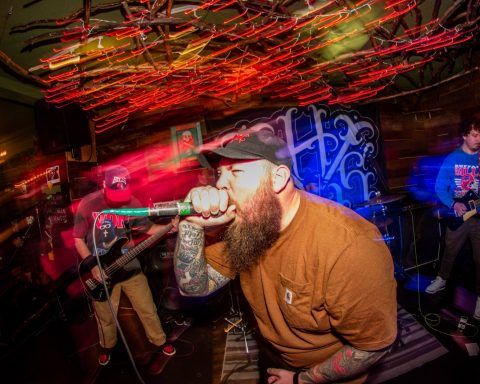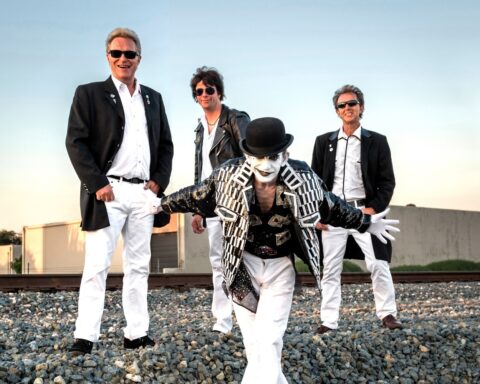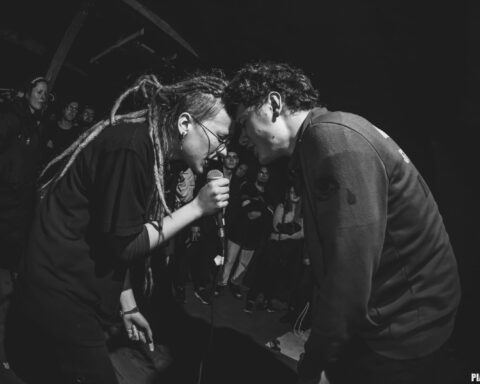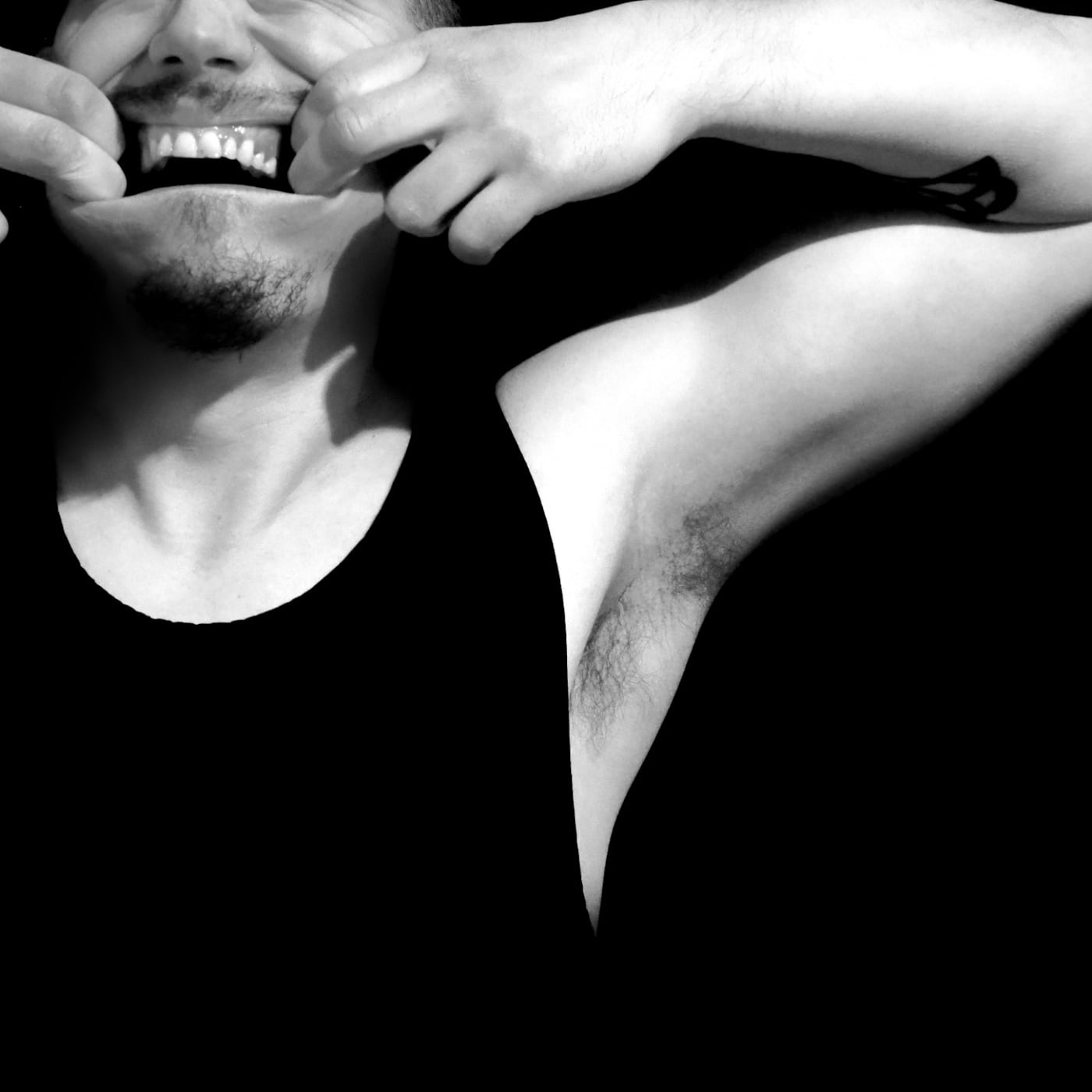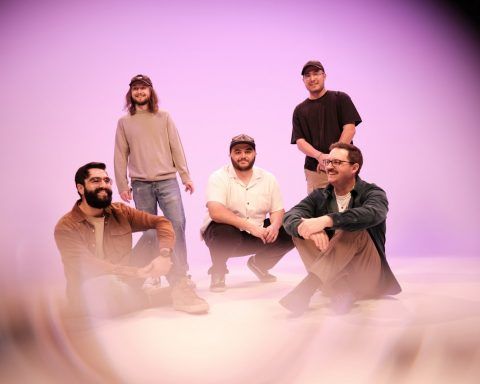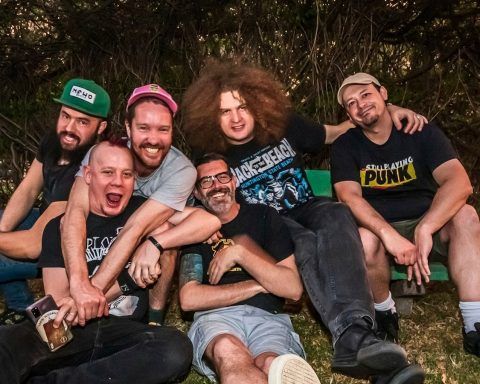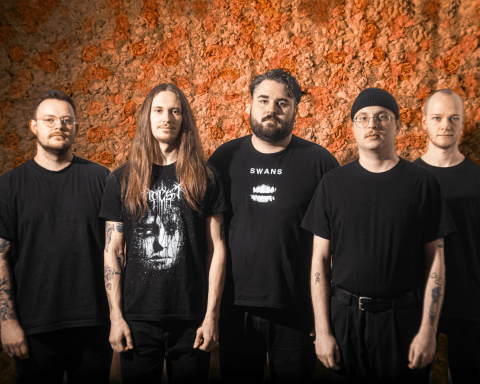Eloquent yet aggressive, Heroin stood at the heart of San Diego’s hardcore punk scene in the early 90s, an indelible symbol of raw, unfiltered emotion. Born amidst an era of riotous musical exploration, their sheer intensity reverberated throughout the punk and post-hardcore communities, leaving a legacy that endures to this day. Their seminal 7″ record, released in 1991, not only marked the band’s first public offering but also laid the foundation for Gravity Records, a label that would go on to nurture the unique “San Diego sound”.
When you delve into the tale of Heroin, it’s impossible to ignore the backdrop of the San Diego punk scene of the 80s. At the time, it was a cauldron of raw and unpredictable energy, marked by gangs with menacing monikers such as The Friends of No One and the San Diego Bootboys. Yet, from these uncertain beginnings emerged a fervor that eventually led to the band’s formation by Matt Anderson and Ron Johnson. It was a brave, experimental venture, geared towards stretching the boundaries of the hardcore musical format while keeping it loud, fast, and uncompromising.
Heroin’s discography, primarily released in the early 90s, still resounds with immense influence. Their raw and intense sound, something akin to the unbridled surge of a storm, proved formative for countless post-hardcore and screamo bands, both in their era and beyond.
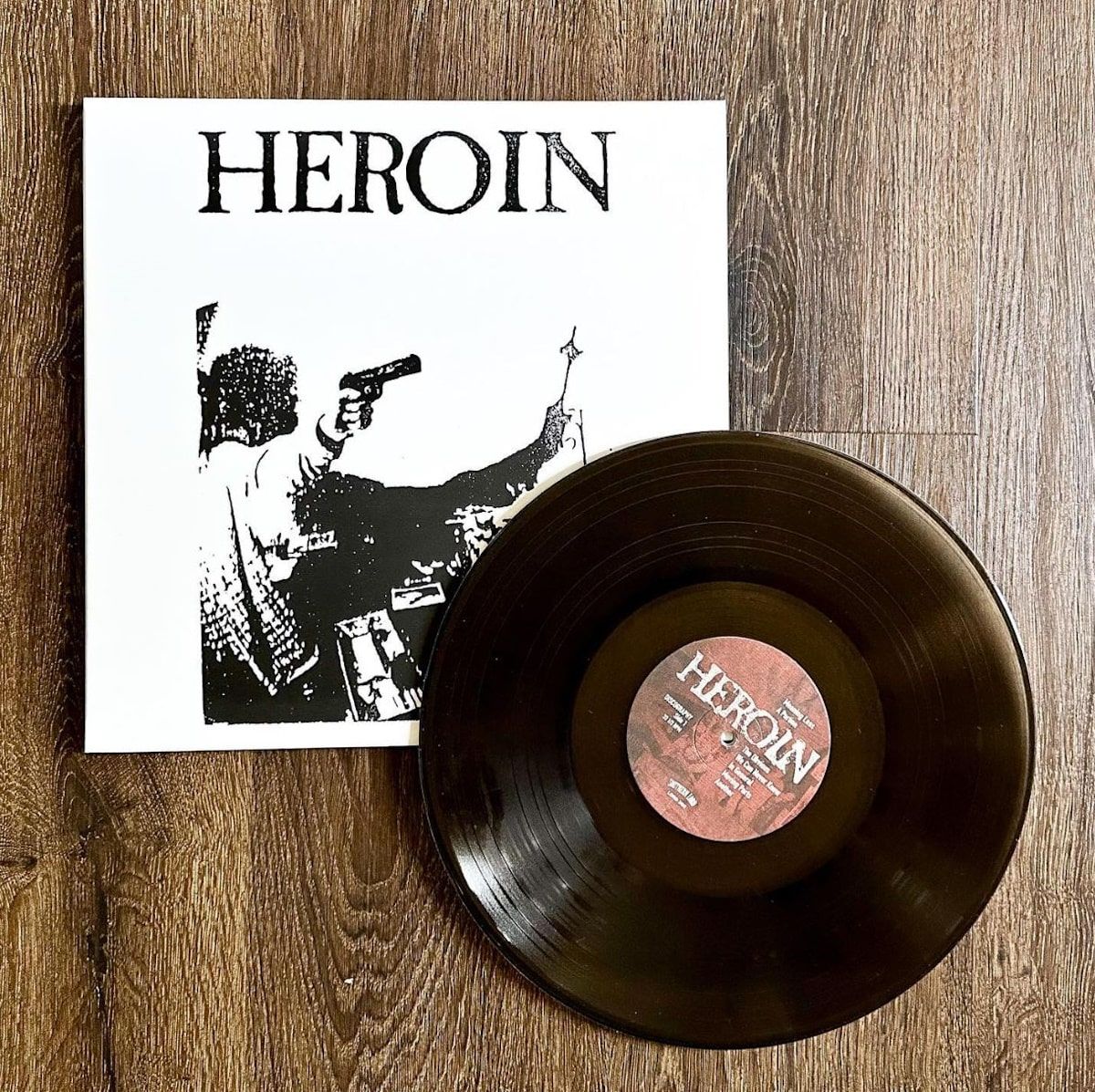
This July, Southern Lord Records is gearing up for the digital release of a mammoth compilation album from these stalwarts of the historical San Diego hardcore scene. This compilation features tracks that are fresh, ones that have remained unheard until now. The discography release on Southern Lord comes after a Record Store Day exclusive variant earlier in April.
With Heroin’s legacy set to be revitalized, the band members speak candidly about the unheard tracks from their archives. Interestingly, these songs were recorded during different sessions and practices. Some of them didn’t see the light of the day simply because they weren’t pursued to completion. And now, they finally get to be a part of the band’s public catalog, adding new layers to their indomitable spirit.
“The completely unheard unreleased tracks were from different sessions we would record; I had a recording studio for my label, Gravity, that released Heroin originally. So, we would record new songs at practices and some we did not follow though fully with. A couple of the unreleased songs were early and were dropped before making it on a record. One of the unreleased songs was from a recording session while we were writing songs for our 12”.” (read the full interview below)
In an era defined by the digital consumption of music, the band still believes in the potency of the physical components of an album. The comprehensive packaging of the album, which includes a double LP Gatefold “tip on” jacket, and a special zine with photos.
The legacy of Heroin seems to be everlasting, like a well-rooted tree that continues to bear fruit despite the passage of seasons. The band members, during our conversation, reflected on their impact with a sense of humility and respect for the music that they helped shape. When asked about the current re-emergence of their work and the impact it might have on newer generations, they noted the element of surprise and a sense of fulfillment.
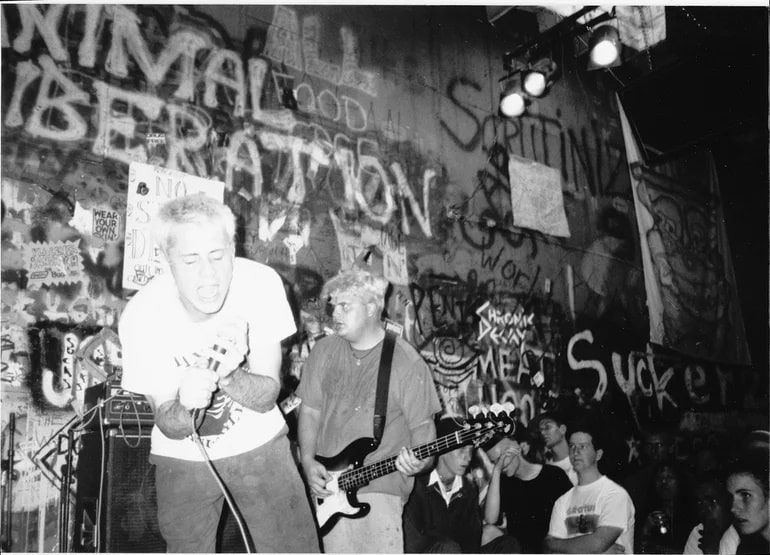
“It is a truly great feeling thirty years later to know that Heroin made an impact,” the band reflects, acknowledging the extent of their influence and its longevity. They attribute their enduring resonance to being in a “sweet spot in time” and their passion for the music they were making.
Looking ahead, the band muses about their potential in the current sociopolitical climate. They seem to agree that, had they continued to create music, their sound would have evolved significantly, remaining as potent expressions of the times but within the new context. Yet, the spirit of their music, the existentialist observations and poetry, could certainly find a place in today’s musical discourse.
“Heroin was a product of our time and our youth so I’m sure we would be unrecognizable if we kept putting out records for thirty years… I think our overall spirit could be relevant today because our lyrics and message were mostly existentialist observations and kind of just poetry.”
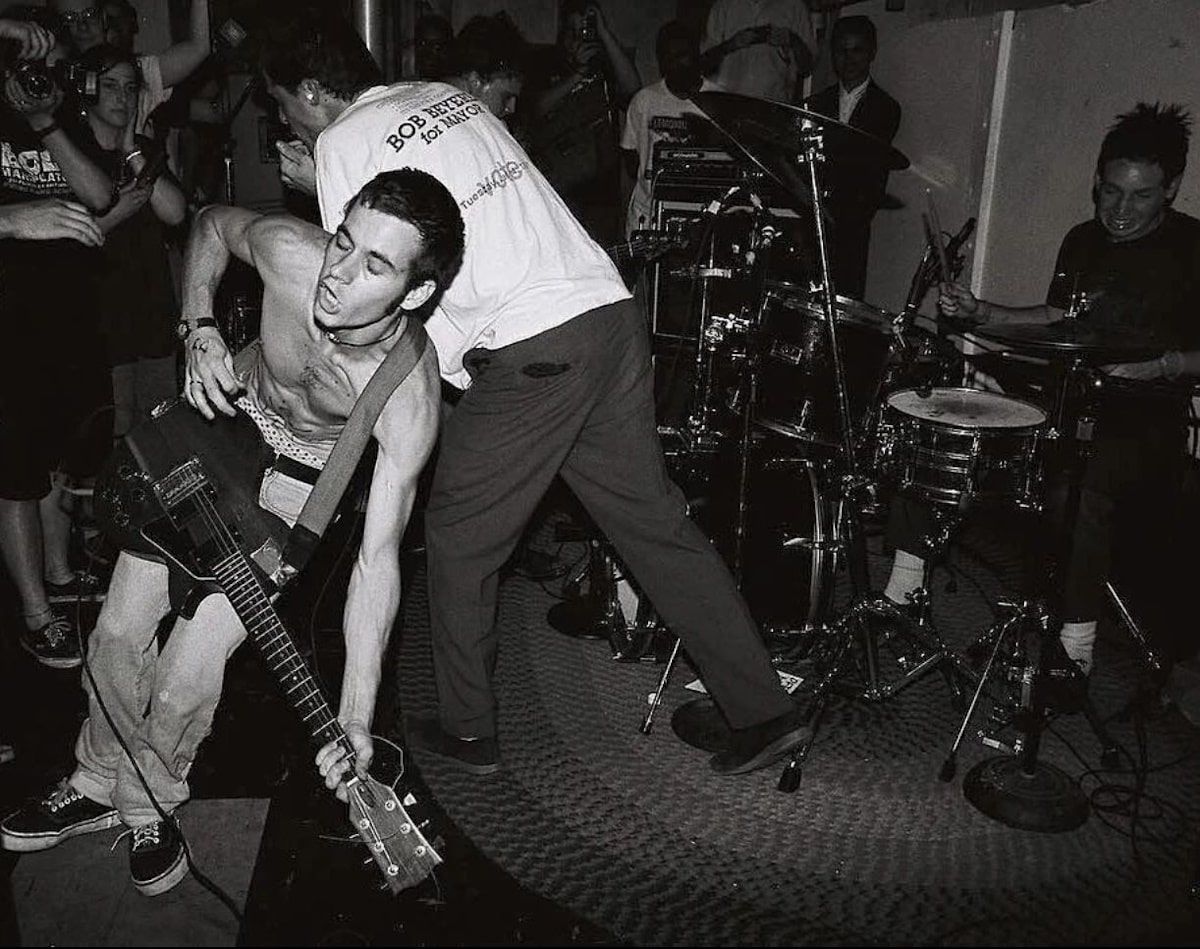
In their echoes and reflections, Heroin preserves a sense of timelessness. From the confines of a small, close-knit San Diego scene, they created a tremor that, years later, still causes ripples in the vast ocean of punk and hardcore music. Their spirit — passionate, fearless, and unyielding — not only shaped the contours of a genre but, more importantly, it continues to inspire countless musicians and listeners, guiding them through an exploration of intense, raw soundscapes. Through their records, released anew for a different era, they stand immortalized, a testament to their pioneering role in the ever-evolving narrative of hardcore music.
Now, as the compilation album readies for a digital release on the 23rd of July, new audiences will get to experience the visceral energy and the blistering intensity of Heroin.
We sat down with the band to get some more details about their past and this new offering. Here’s our full interview.
With Heroin’s discography primarily released in the early ’90s and now seeing a re-release, how would you say the music landscape has changed since then? Do you think Heroin’s raw and intense sound would have the same impact if it was introduced in today’s music scene?
The musical landscape has changed a lot through the years for bands that make a career out of it, which we never had any intention of. It has become a lot harder for bands to cut through but in the world of hardcore I don’t think it has changed a lot and maybe has even gotten better in terms of places to play and acceptance.
It also seems to have been taken over by metallic moshing style stuff as if New York HC stuck it out long enough to win out sound wise. It seems like hardcore is as strong as ever, but I am not exactly in touch with it enough to say for sure. It’s really hard to say if 30 years later we as a band would have the same impact. I do think the lyrical content has a sort of primal, visceral nature to it that could still have the same impact but musically it seems that the evolution of bands plays out like an arms race constantly trying to up the intensity and the speed and the weirdness and then the wave crashes and things reset again calming down and exploring different aspects; each thing somewhat playing off the next even if it’s a negative reaction to the previous thing.
So, I really have no idea how it would play out if we were doing it now. I would think of it like similar to how intense and over the top the song “Great Balls of Fire” was at the time but with so much water under the bridge you can’t really judge except in the moment, and it is much harder than it seems to be earlier at something; so comparisons between eras are not fair. To that point, I once heard someone say Interpol were actually better than Joy Division and thought that was just an insane thing to say.
As pioneers in the hardcore punk and post-hardcore genres, Heroin’s influence has been seen in many bands of the subsequent generations. What do you think of the bands and artists that cite you as a key influence? Any in particular that stand out to you as successfully carrying on the spirit of Heroin’s music?
It always feels good to be put in a conversation as being influential. At the time we did think we were doing something special and had a single-minded energy and a seriousness about it and had a kind of mission to it and I do think that feeling still comes across.
We were a band that bridged what was going on in the 80s hardcore to what would become more popular in hardcore in the 90s by sort of taking different elements of 80s stuff and refreshing it. In the mid to late 90s you could hear and see the influence but as time has gone on I feel like it’s harder to pick out, but it’s nice to be in that conversation and it’s actually more than we had hoped for.
We just wanted to be a good band of the time but to be remembered is a truly great feeling. I really can’t think of any specific band carrying on the spirit of Heroin’s music; it all gets so mashed up and we were also a mash of our influences, that’s just all music that is like that.
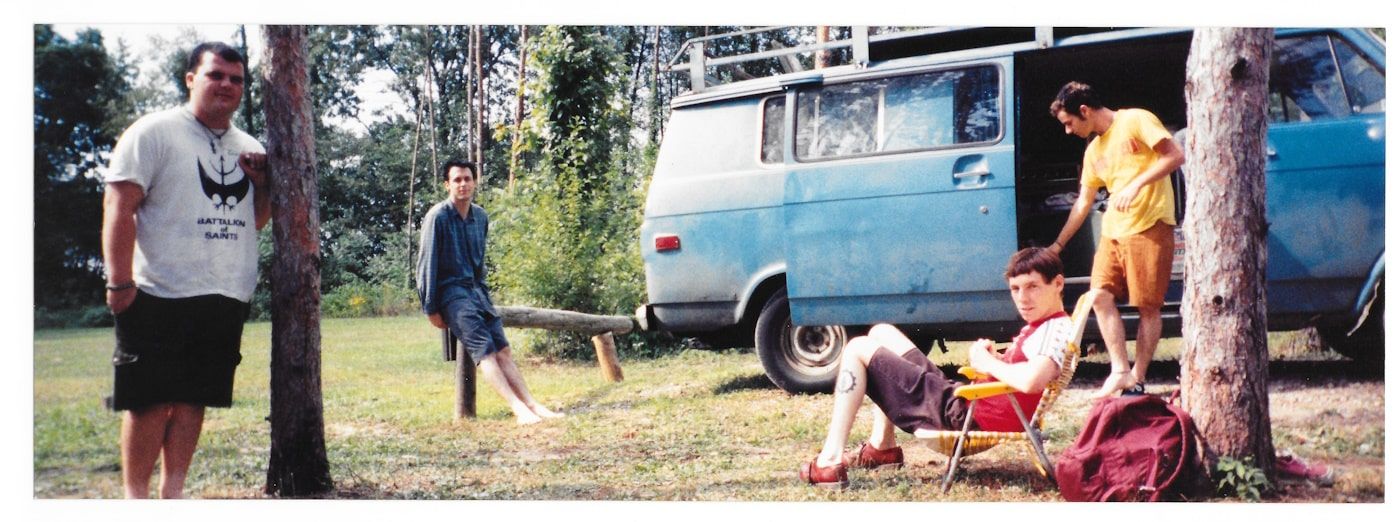
The discography is being released with previously unheard tracks. Can you give us some background on these tracks – why were they not released initially and how do you feel about them being heard by the public now?
The completely unheard unreleased tracks were from different sessions we would record; I had a recording studio for my label, Gravity, that released Heroin originally. So, we would record new songs at practices and some we did not follow though fully with. A couple of the unreleased songs were early and were dropped before making it on a record.
One of the unreleased songs was from a recording session while we were writing songs for our 12”. Another one of the songs was from our final recording sessions and was meant to be on a future record but we ended up breaking up before we had more songs.
There are also other unreleased versions of songs that were done a bit faster and were from a session we did just because we had extra tape at a studio. As for how we feel about them being heard now, we think that the songs stand up against all of our other released songs and a couple of them may be some of our best stuff actually. The unreleased song from our final recording session may be one of our best songs and makes me sad we did not record more. I think we may have had one more record in us, but it was obviously not to be.
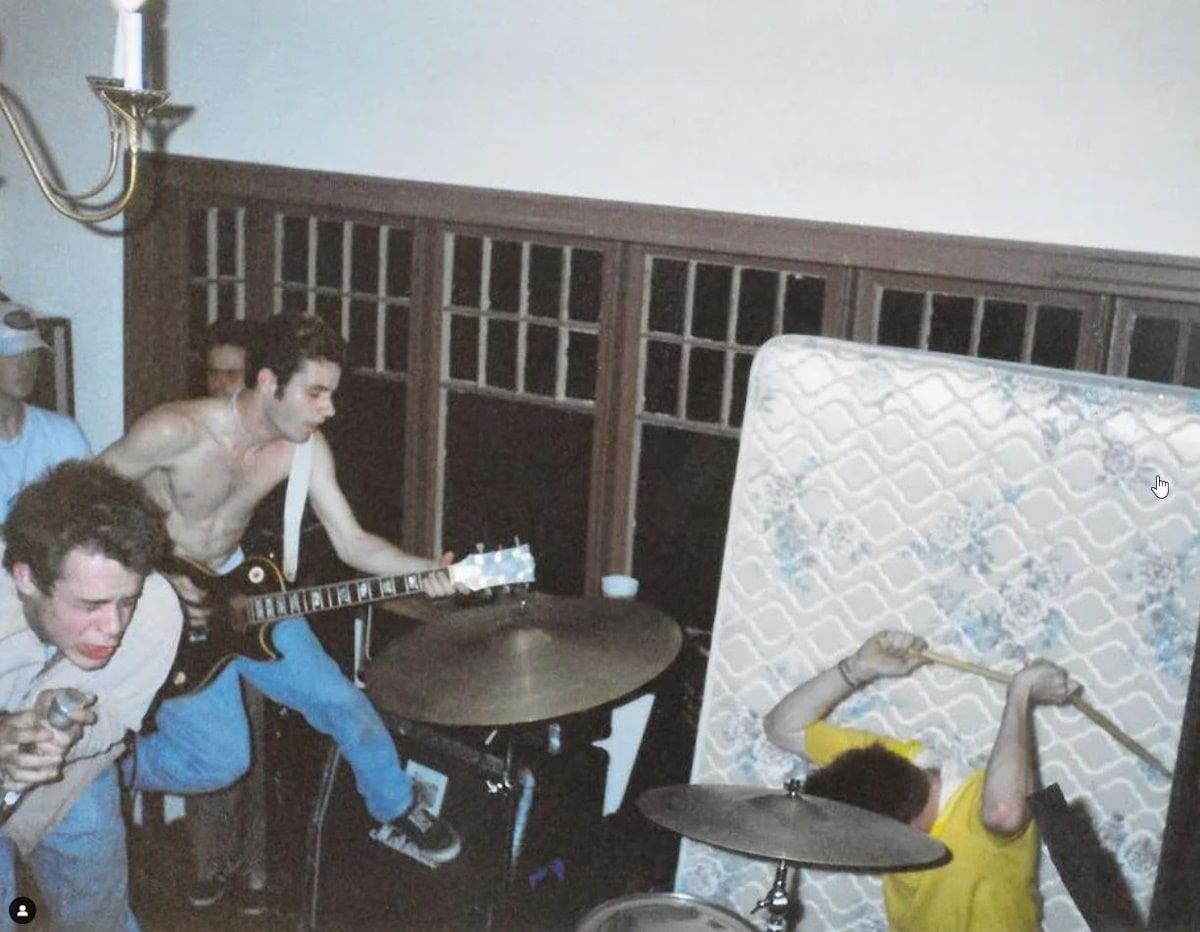
The collection also includes the sessions you recorded at the Inner Ear Studios. Can you recall any particular memories from that session that you’d like to share? How significant was it in the context of Heroin’s musical journey?
When we were on tour, we set aside an extra day to go record at Inner Ear just because of our love for DC music and love for so many records that came out of there. I just remember going there pretty early in the morning and Don was a laid back very nice guy. He did a pretty simple set up, but the room’s acoustics and his mics made us sound a lot better than on other recordings. We recorded straight to two tracks, not multitrack, so it was a live mix.
The songs released from that recording we didn’t mention were from there, we just kind of wanted to keep it secret but some of the songs from our 12” were recorded there and some other songs we used for compilation tracks. Unfortunately, the band had to record just music only without the vocals because during tours my voice would get pretty fried from playing shows night after night. I was very hoarse, so I was in no shape to record. We did try a couple songs with me singing but it wasn’t working so the band recorded with no vocals and I ended up overdubbing the vocals later on in San Diego.
Considering the packaging of the album – the double LP Gatefold “tip on” jacket, and the special zine with photos and liner notes – how important do you feel such physical components are in the era of digital music? In the digital era, do you think it still helps in delivering a fuller, more comprehensive experience of your music?
In the digital era of music, that has been going on for quite a while now, I still think the visual presentation of a band is really important. That was something that started lacking horribly with CDs with just how everything had tiny little, microscopic fonts and the cover art had to be small. It took away from the feeling that a band wants to get across with their music.
Maybe the expectation for what can be done visually is just a holdover from the vinyl era but when you compare against CDs first and then with all digital releases you see what those are lacking vs. a 12”. I guess if we were used to a 24” record the 12” would seem lacking. What I always loved about a hardcore record was the art and having a lyric sheet, I always just loved that vibe of it all. Heroin and our label Gravity celebrated a certain kind of artistic element to the packaging and that is something that we did with this record to go along with that same feeling.
Obviously, the music is the most important part, but the artwork just complements it. Thinking back to all the great records I loved and the different kinds of presentations such as the Rudimentary Peni records or Crass records, and so many more, those could just never come off the same without the full deal and that’s kind of the feeling and appreciation that we always had for that format, so I do think it is important. Southern Lord did a great job working with us to give us exactly what we wanted out there for the new discography.
Could you comment on the underground punk/hardcore community of the ’90s? How do you think its spirit has persisted or evolved over the years?
The hard-core and punk community of the 90s was something that we were lucky to be a part of. Some of what made it special had to do with the timing of all the 80s bands kind of fading out or moving away from hardcore but us being young enough at that time to appreciate all they had evolved into but still into the early hardcore stuff. We were in a place to take over the mantle of hardcore with a full perspective of what had happened in the 80’s evolution of it.
The way I look at it is all through the 80s the music scenes were somewhat owned by the bands who invented Hardcore and Punk who then moved into Emo, Alternative, Math-Rock and Metal, etc; in different directions over that decade.
They all started changing and evolving but they dominated it until right about in 1990 a void started being created as the older generation faded out a bit. In San Diego in particular, which was known as a very violent punk and hardcore scene, all the tough guys and all the ass kickers dismantled the scene so badly that by the 90s the people like us who are young and not quite so tough as some 30-year-old skinhead, had to hideaway a little bit and do house shows and kind of rebirth the thing in hiding.
So it was a close-knit community and it was a little bit like that all over the U.S. with bands like Born Against, Downcast, Spitboy, Universal Order of Armageddon, Undertow, Unbroken, The Locust, Amenity, Blatz, Filth, Rorschach; all that group of bands that came along at that time. Even though the scenes were very different they all had a similar sort of vibe of refreshing Hardcore and we at the time thought it was sort of a second wave of Hardcore.
Who knows if it really was a second or third or what wave, there’s always a continuum, I do think maybe the Revelation Records stuff might’ve been a second wave but that was still interconnected with the 80s. I feel like there was a definite break in the 90s, so those people even though they were a whole wave of their own of the straight edge wave they were still connected to the old-school hard-core stuff.
The spirit we were part of has definitely persisted to this day in the way that Hardcore is still very big and never seems to die. It is hard to tell in the continuum what specifically has really persisted because it all blends, but I do think the tougher more macho type hardcore has somewhat won out which is kind of lame even though I have loved very many of those type bands. But, I don’t hear many bands trying to sound like Articles of Faith anymore and that’s a shame.
The band members moved onto other projects after Heroin disbanded. Could you talk about how your experiences in Heroin influenced those subsequent projects? Any specific elements or learnings that were carried forward?
The post Heroin bands with Heroin members mainly started while Heroin was still around, everyone except for me (the singer, Matt) had started other bands so there wasn’t really a gap there and as our San Diego scene at the time was growing those new bands fed off of that. More and more people are coming into it and more friends were interested in starting bands so I’m not really sure if we used the experiences in Heroin to learn lessons but the influence of Heroin for us was that we just expanded on what we were doing.
Scott, our guitar player, started Clikatat Ikatowi, our drummer Aaron did Antioch Arrow and our bass player Ron started Second Story Window. Each of those bands was a sort of extension of what we had started but with the individuals’ personalities. I concentrated more on running the record label Gravity.

Another band that members of Heroin did was called End of the Line and it ran concurrently with Heroin.
Our album was recently re-released on Three One G records and is worth checking out. It’s pretty cool that those bands burst out of Heroin because initially with Heroin we didn’t really know if it would turn into anything but turned out to be the spark that started some other well-regarded bands. Aaron’s band Antioch Arrow, that he sang in, went on to make what may be my label, Gravitys’, most intense and original record “In Love with Jets”, which for many people was the peak of what we were trying to do in San Diego at that time.
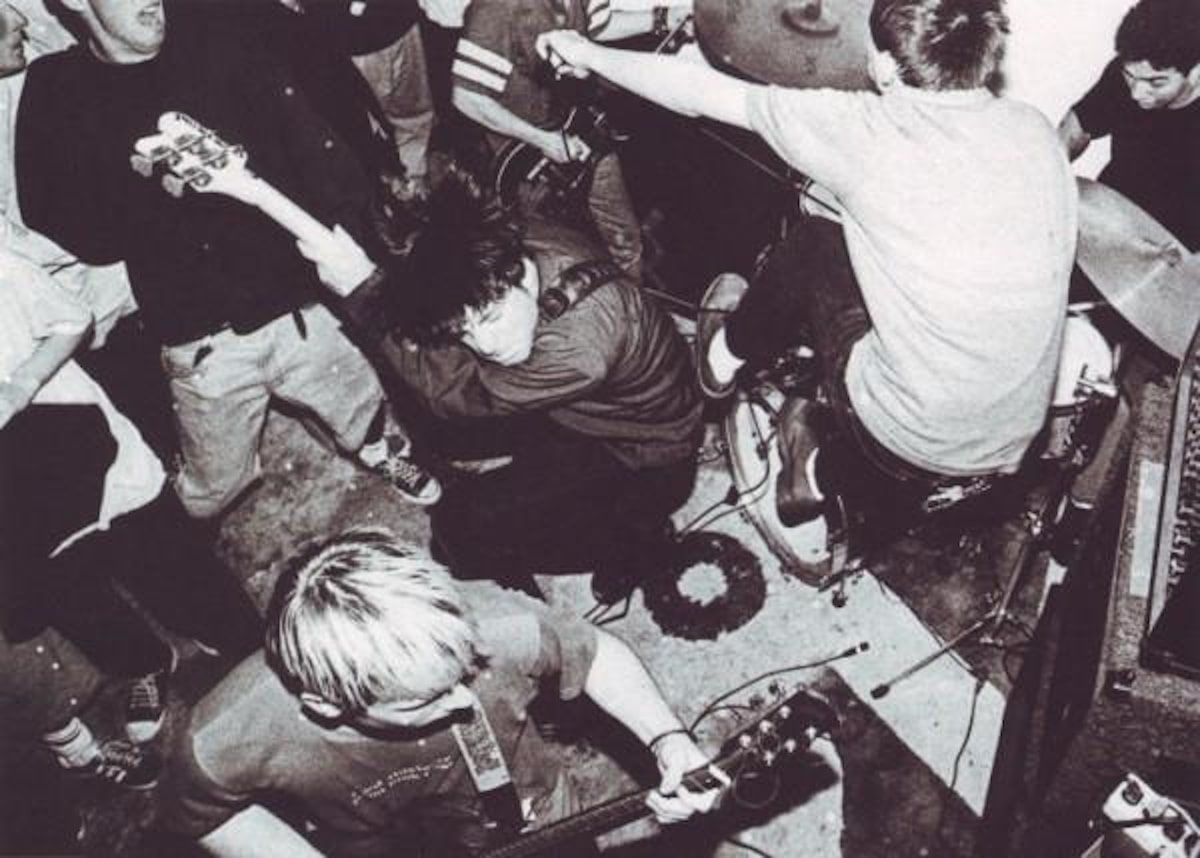
With Heroin being a key part of the “San Diego sound” and having the first release from Gravity Records, can you discuss your relationship with the label and its role in your band’s journey?
The second Heroin 7” was released by Ron Johnson (bass player) and I, we had not decided to fully do a record label at that time; we just wanted to release a record for ourselves and maybe had the idea to turn it into something more. That was Gravity’s first record and from there we released many San Diego bands and bands from elsewhere that were coming around at that time.
Gravity got known for releasing some hardcore bands that we generally called emo-hardcore if pressed to do so but it was mainly just hardcore or punk to us. If you think about it, most music has emotion, but I think when it came to hardcore there was a battle to dictate how it should sound so the more meat headed side who claimed to know what hardcore should sound like used term emo derogatively to show it wasn’t tough enough to pass muster; they were wrong.
I have no problem with the term emo as some people do and I know that it later morphed into territory that is better known for that kind of goth emo look from the two thousands. I’m not really worried about that though but sometimes that can be hard to explain to people who have no idea.
Along with the music, Gravity also got well known for our hand done silkscreen packaging and stencil spray-painted covers, among other DIY hand crafted designs. This caught on quite a bit in the early 90s and beyond.
Gravity initially was Heroin and Heroin was Gravity, the two really couldn’t be separated. Heroin also helped Gravity get its start due to the fact that it was “Heroin’s label” which attracted bands to us, and we asked bands to do records while we were on tour. Getting bands to do records with your small label is not that easy and being in Heroin gave us an in with bands such as Unwound, Huggy Bear, U.O.A., Born Against and Angel Hair, that we were lucky to release.
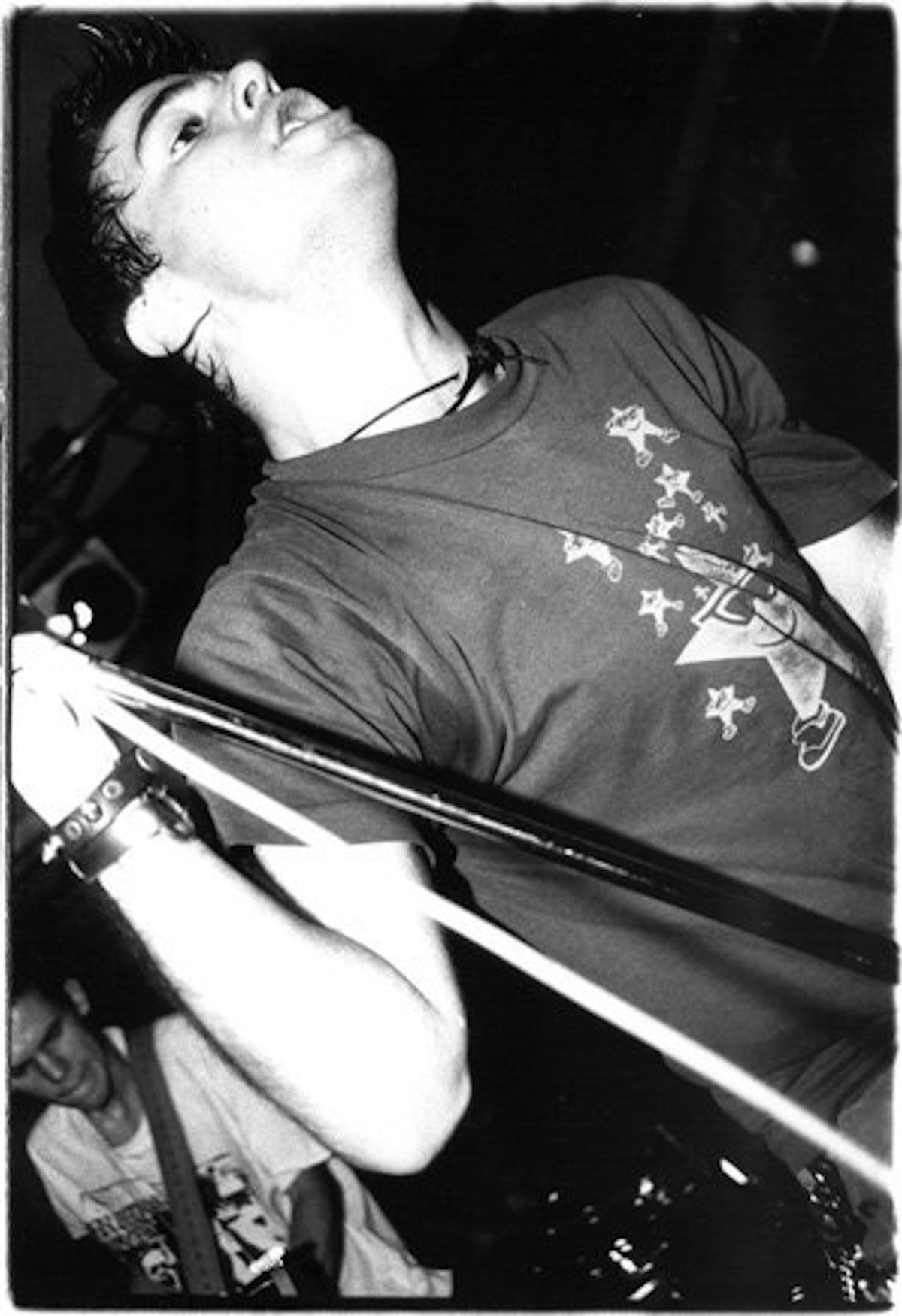
The look that Heroin put forth extended into other Gravity releases because the limitations of silk-screening or spray-paint stenciling the art created a cohesive feel between the releases, but it wasn’t that Gravity dictated what the bands art had to look like it just worked out that way via those mediums used.
Despite the short lifespan of Heroin, the band has continued to receive posthumous acclaim. How does it feel to see the band’s legacy continue to inspire and resonate with listeners, many of whom were not around during the band’s active years?
It is a truly great feeling thirty years later to know that Heroin made an impact. I think this is because we were in a bit of a sweet spot in time and as a band we were inspired and loved what we were doing. Without sounding too arrogant, I think we were honest and that kind of shows through.
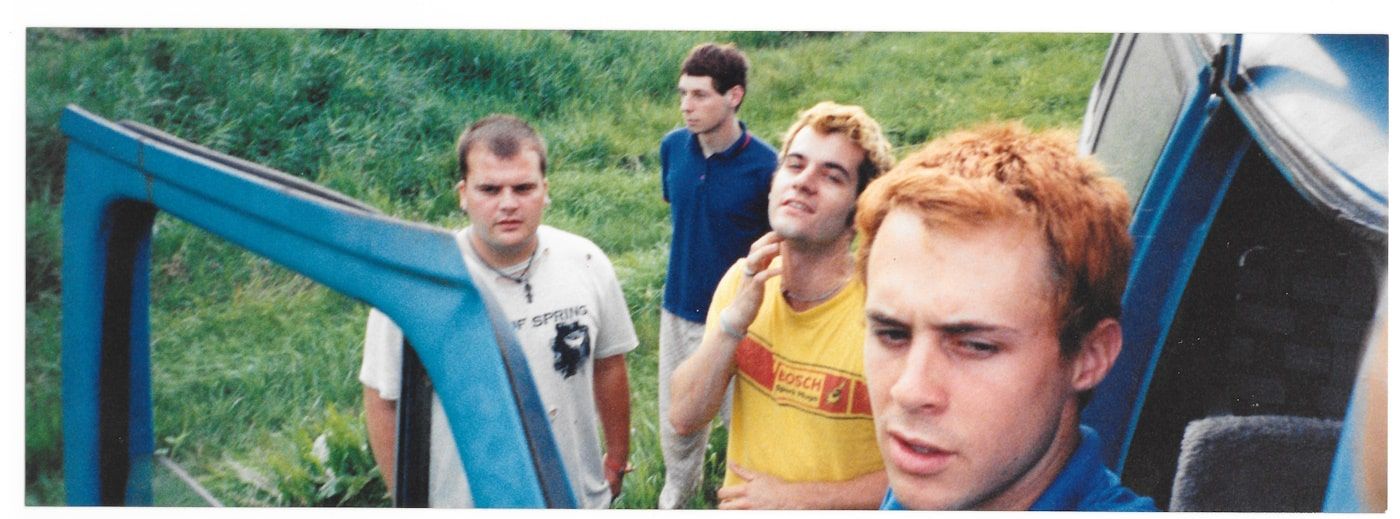
Considering the intensity and emotional charge of Heroin’s sound, which was often fueled by the times’ sociopolitical climate, do you feel there’s a space for such potent expressions in today’s musical discourse? How would you imagine Heroin would respond to the contemporary climate through music, if it were still active?
If Heroin were still around in this current climate it is really hard to say what we would be doing. We were a product of our time and our youth so I’m sure we would be unrecognizable if we kept putting out records for thirty years but more to your point, I think our overall spirit could be relevant today because our lyrics and message were mostly existentialist observations and kind of just poetry. Yes, fueled by our climate but more focused on the theme to it than specific details. People are still feeling close to what we were feeling back then although things have taken a more hopeless turn these days. But our lyrics weren’t exactly rosy and were pretty bleak so they could still fit into the vibe of this time. I do think there is still a space for potent expressions in music, that is what music should always be about.

